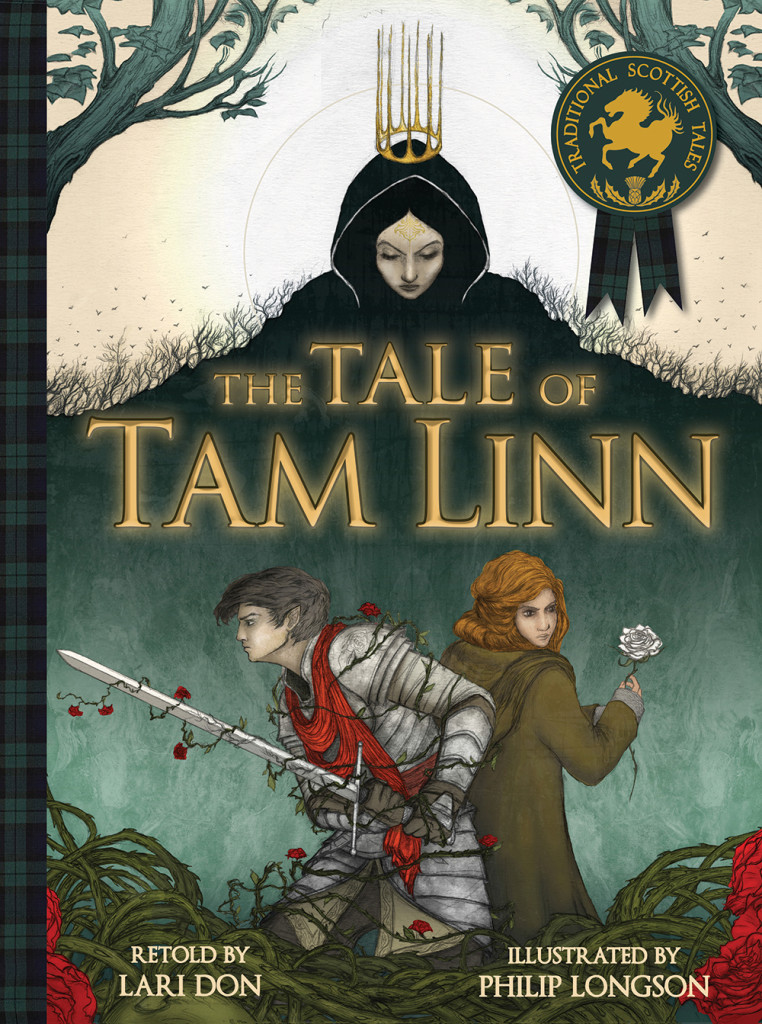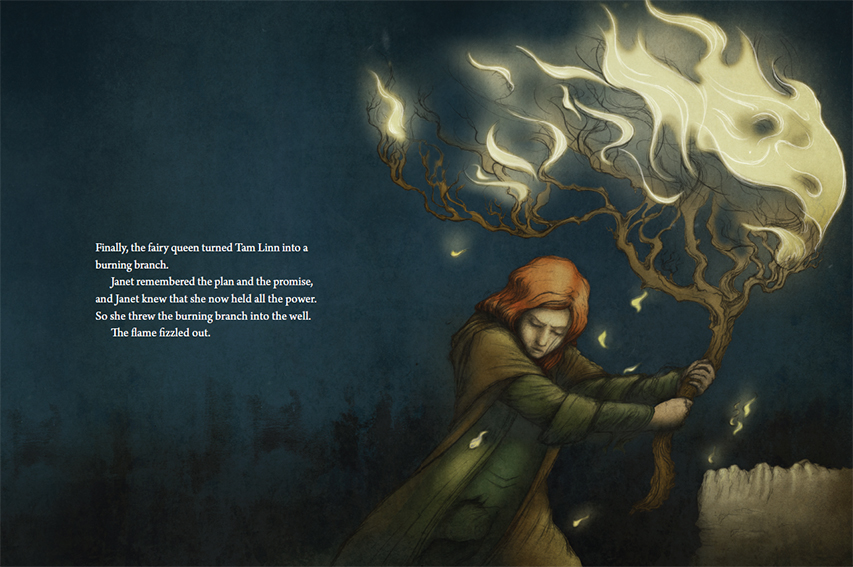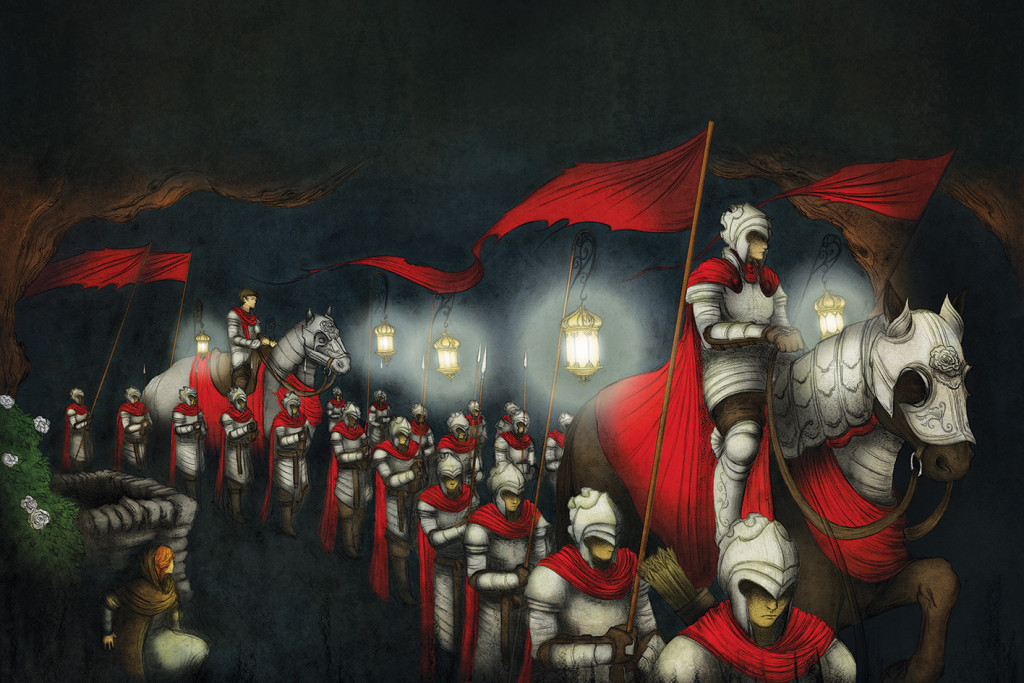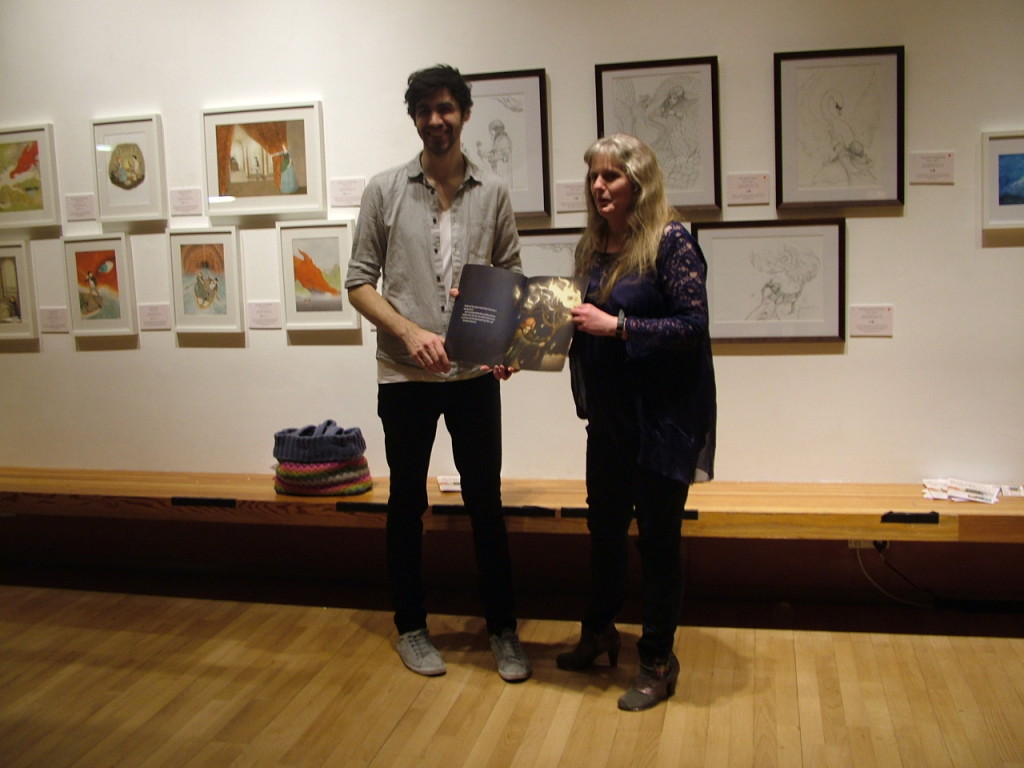The Floris Books Picture Book Process
by Floris Books • 28 January 2015 • Floris Design • 0 Comments
Once upon a time, a writer wrote a story and a publishing house decided that it was so fantastic, they wanted to share it with the rest of the world.
“This story will delight children so much more if it is illustrated!” the writer said.
“We agree,” said the publisher, “we’ll get our best Designers on it at once!”
And that’s where I come in; my name is Leah and I’m the Designer at Floris Books. It’s my job to make our picture books as brilliant as possible, and the best way to do that is to work alongside an equally brilliant illustrator! There’s much more to creating a picture book than meets the eye. An illustrator works hard with an author to make a picture book look wonderful, and they both bring unique talents. A recent article in The Bookseller highlighted how we should recognise their role so much more. Floris Design wholeheartedly supports this idea, so this week they asked me to reveal all about how we work with illustrators to create beautiful books. Come with me on a journey through The Tale of Tam Linn by Lari Don and Philip Longson!
1. Illustrator search and commission
The whole process begins for me when an enthusiastic Editor appears at my desk and hands me a finished manuscript for a picture book. It’s my job to find the perfect picture partner for the story, so I read it carefully to get a feeling for the sort of tale it is.
If it’s a funny story it would require quirky, lively illustrations like those by Kate McLelland in There Was a Wee Lassie Who Swallowed a Midgie: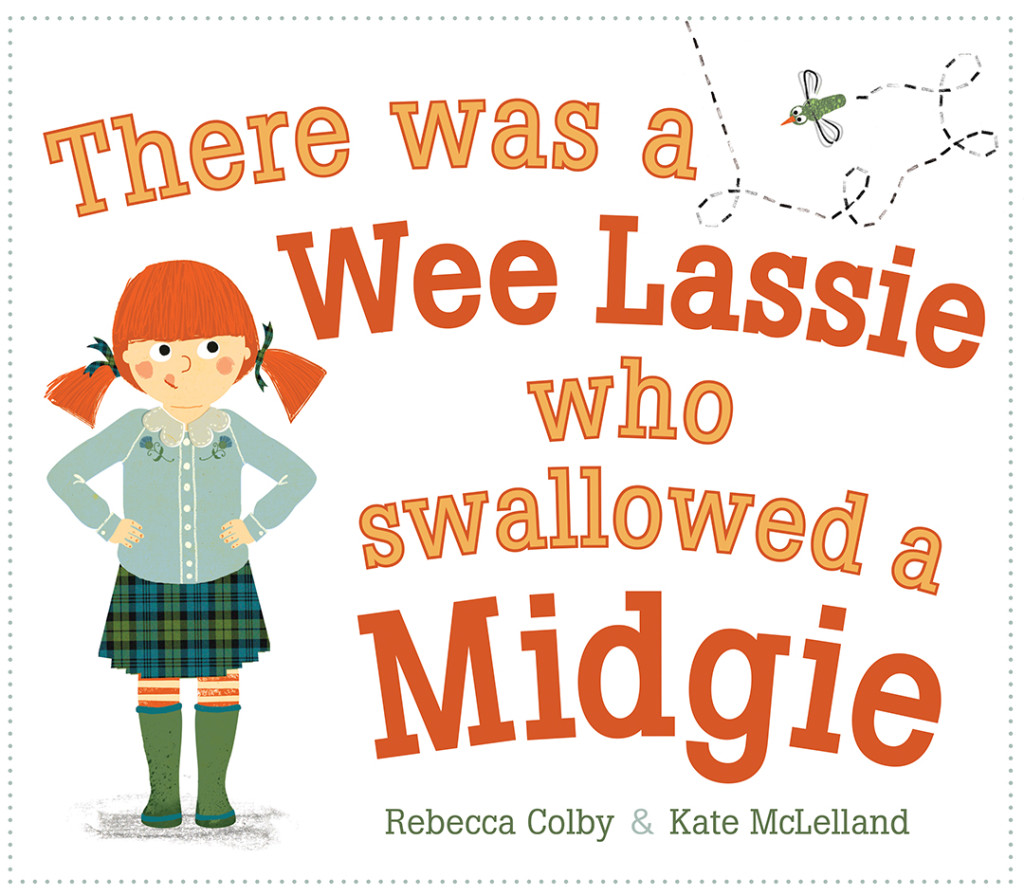
If it’s a grand tale it would call for beautiful and earnest artwork like that by Matthew Land in The Dragon Stoorworm: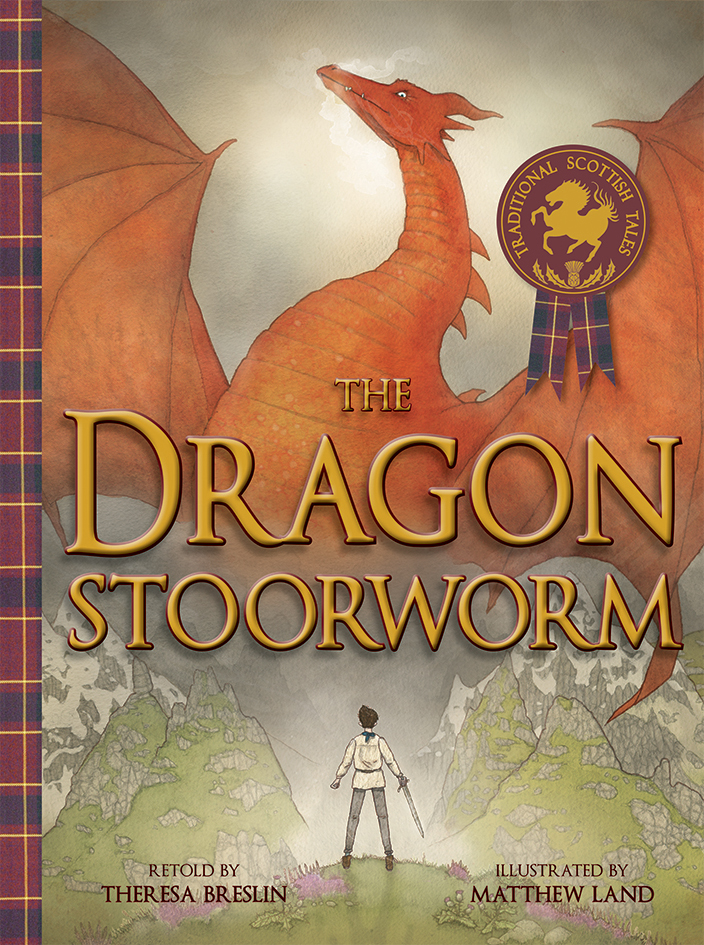
If it’s a dark tale it would demand an atmospheric and dramatic interpretation. The latter is what I immediately thought when Lari Don’s The Tale of Tam Linn appeared on my desk. It’s a modern adaptation of the dark Scottish folk tale involving a young girl, an evil fairy queen and a kidnapped boy.
Now that I knew what kind of feeling the illustrations had to invoke, I had to find the right illustrator. I have various ways of finding illustrators for new projects:
- Internet research – searching for the term ‘children’s illustrator’ and looking through the blogs and websites that come up
- Illustration agencies – looking through agency websites or contacting agents for help finding an illustrator with a certain style
- Degree show visits – I visit all the annual Scottish art college degree shows to spot new talent
- My big file of submissions – all the work that has been submitted to Floris that I think will suit a future project is kept on file for reference when new projects come along
I found the illustrator Philip Longson while visiting the Edinburgh College of Art Degree Show. I took his business card and visited his website to see more of his work. Looking through his excellent online portfolio confirmed all my suspicions that he was perfect for the book, and the rest of the Floris team agreed!
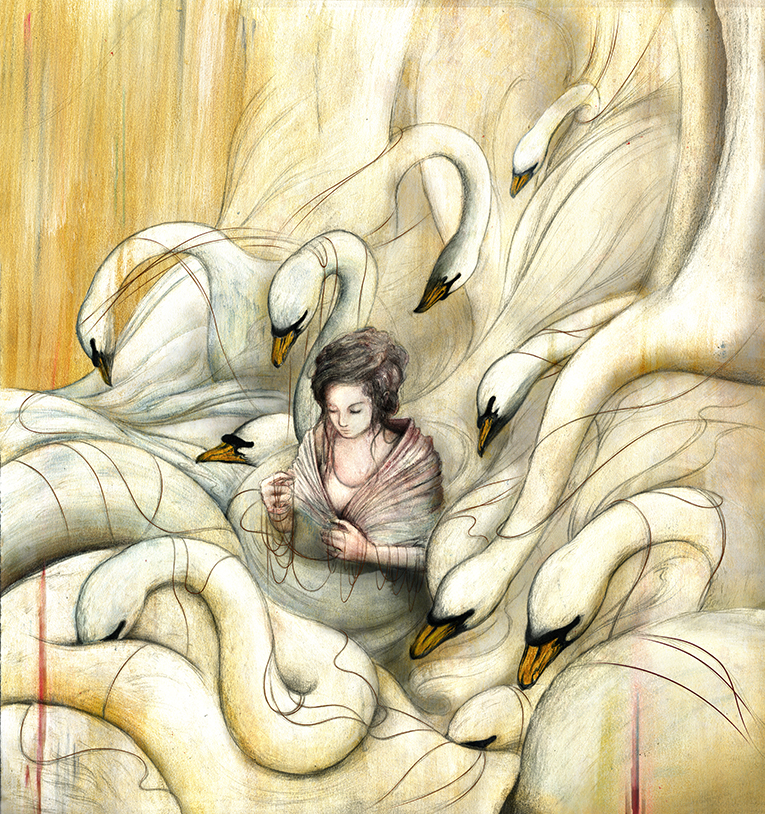
Philip’s Degree Show work was all inspired by fairy tales, so it was clear to me that ‘The Tale of Tam Linn’ project would be right up his street!
2. Flatplanning
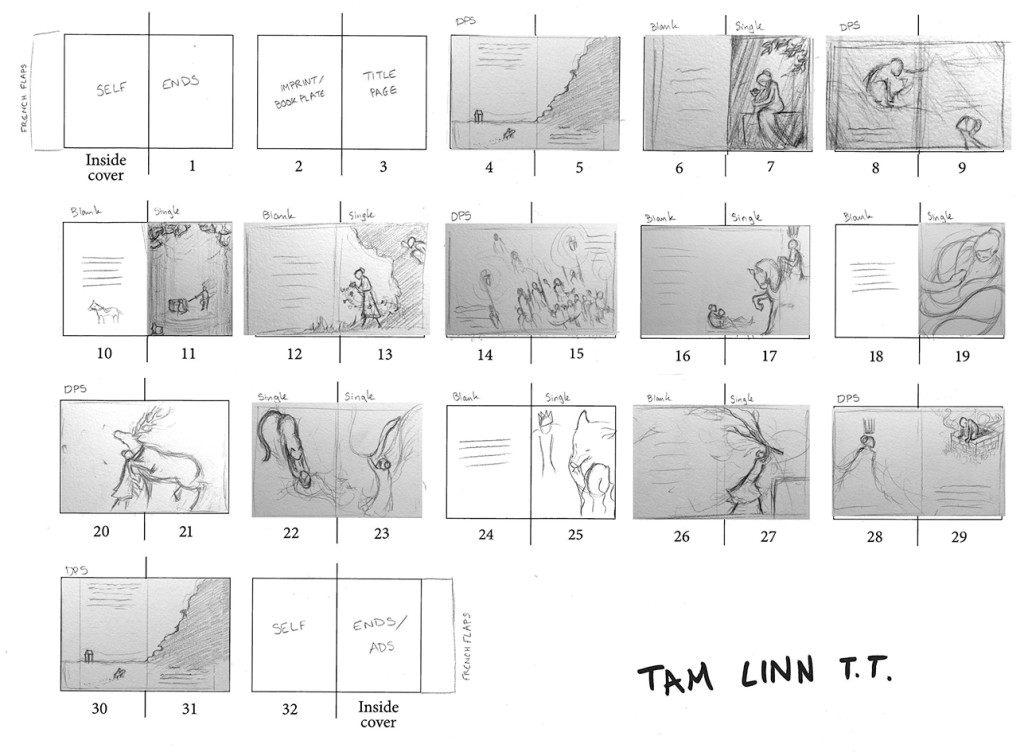
This is the ‘Tale of Tam Linn’ flatplan developed between Philip and I. The final book changed a little from this, but it acted as a great base for Philip to work from.
Flatplans are the perfect way to plan out a picture book – having the whole book laid in front of me allows me to see the flow and pacing of the book. Lari, with the help of her Editor, had already split the manuscript into bits for each page, so Philip and I worked together to figure out how the images would support the flow and pacing of the text.
An illustrator can use multiple vignettes (small illustrations) to show lots of consecutive moments in the story on one page, which speeds things along. If an illustrator wants to fully focus on one important moment in the story then an illustration that fills the entire page or double page spread can be used. Focussing on one moment slows the pace of the story down a little. Using these tools, we can structure how the pictures help the story progress.
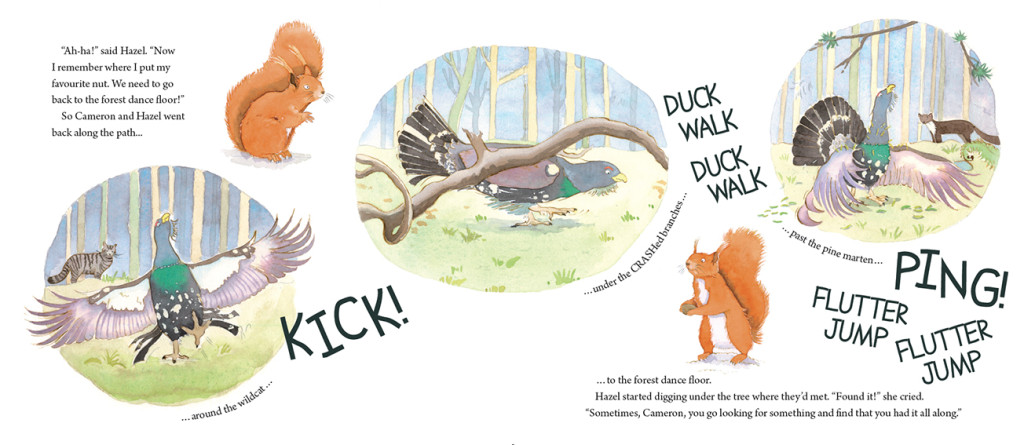
These vignettes from Emily Dodd and Katie Pamment’s ‘Can’t Dance Cameron’ show lots of action in a small space.
3. Design brief & rough drawings
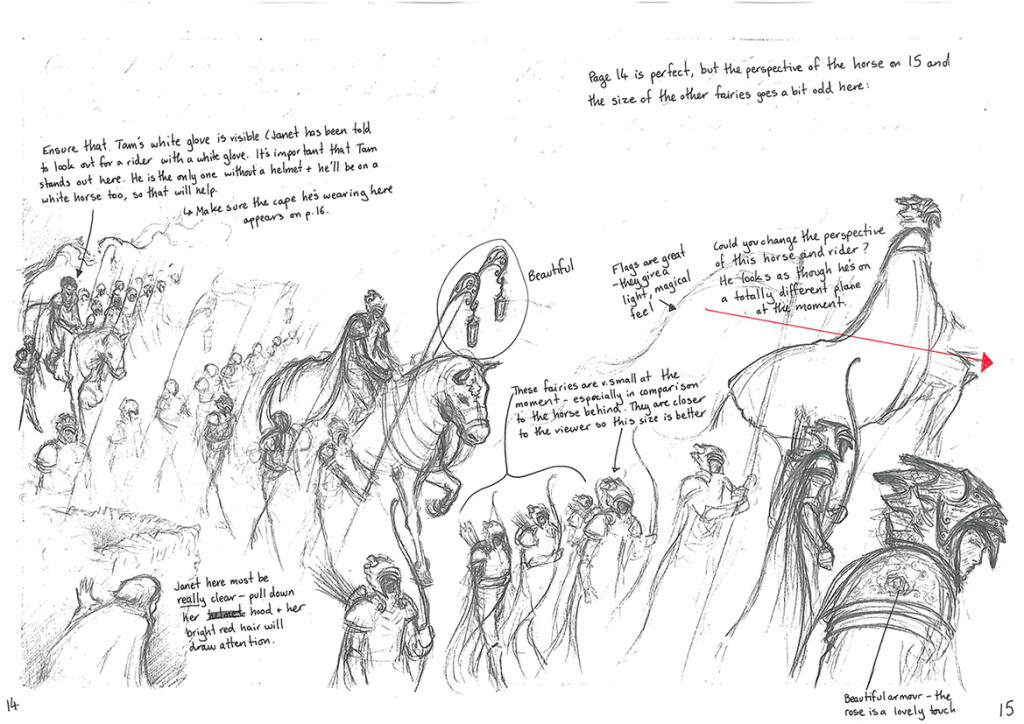
This is Philip’s pencil rough for the spread in ‘The Tale of Tam Linn’ that shows a magical fairy procession; that’s my feedback written throughout it
For all of our design projects, whether it be a cover design or a picture book, I write a design brief for the illustrator. This brief lets them know the basic needs of the project, like who it should appeal to and the overall atmosphere it’s aiming for. A brief shouldn’t tell the illustrator how to do their job! It’s there to act as a guide, allowing them to fully express their talent.
The design brief for The Tale of Tam Linn included details of the book’s target market as well as a page-by-page overview of the important elements from the text that needed to be included in the illustrations.
Philip read through this brief and began working on the sketches (or pencil roughs) for each page. As the Designer working on The Tale of Tam Linn, it was my job to work closely with Philip, giving him advice and feedback on all of his work. It was my job to keep in mind things like the consistency of the characters, how the text works with the image and also where the words should sit on the page.
4. The cover
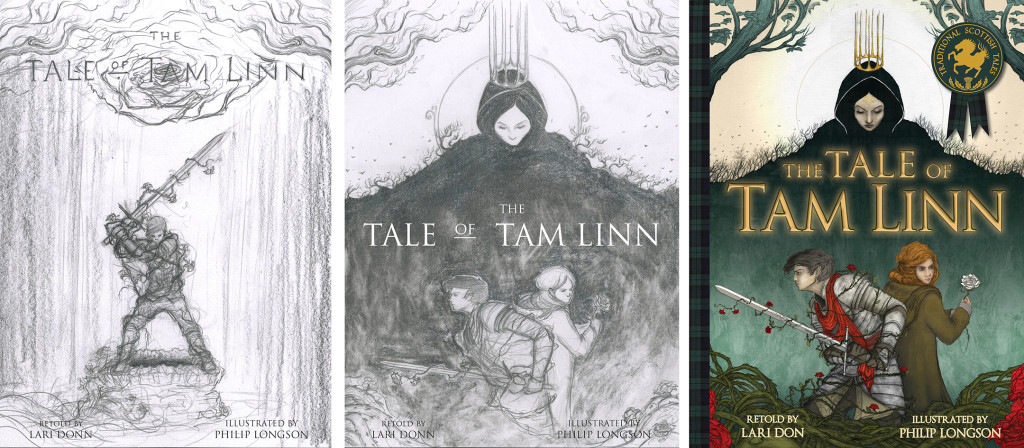
These sketches show the two cover options Philip drafted. The cover on the right is the final product.
The cover has to attract a reader to pick up the book and find out more about it: it’s a call to action. On the cover for The Tale of Tam Linn, we wanted to capture the essence of the tale: the drama and magic of the story, the threat of the fairy queen and the dynamism of the two main characters. Picture book covers have a hard time as they aim to please two different kinds of people: the adult who will be buying the book and the child that will be enjoying the book. Philip and I worked closely to get the cover just right.
5. Layout & printing
Once all the pencil roughs are perfect and are approved by the Publisher, the illustrator proceeds to the final colour artwork. Once that’s all been submitted, it’s the Designer’s job to get the book ready to send to the printer. That involves bringing the text and the images together using design software, having the proofs approved by the author, the Marketing department and the Publisher, and also getting quotes for the cost of printing the book.
Once everyone is happy and a printer has been chosen, the book is sent off to be printed! Time passes while the illustrator, author and all the team at Floris Books try not to get impatient. Finally the printed book arrives, everyone is delighted with all their hard work and very eager to share the book with the rest of the world!
And so Philip Longson, Lari Don and Floris Books lived happily ever after. But what about Tam Linn? There’s only one way to find out and that’s to read it for yourself!
Do you love the gold foil on the cover of your copy of The Tale of Tam Linn? Find out more about book cover effects on our blog.
If you want to find out more about how books are printed, the author of The Tale of Tam Linn, Lari Don, wrote a blog post about her trip to the printers with Floris books!
Interested in cover design? Read our blog post on how it’s done!
